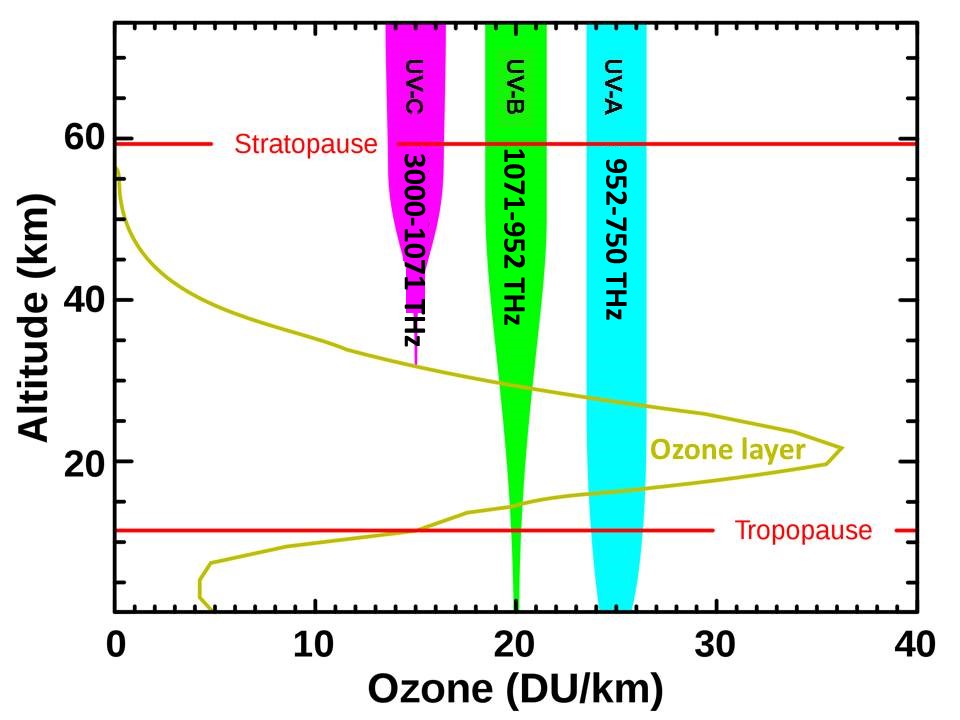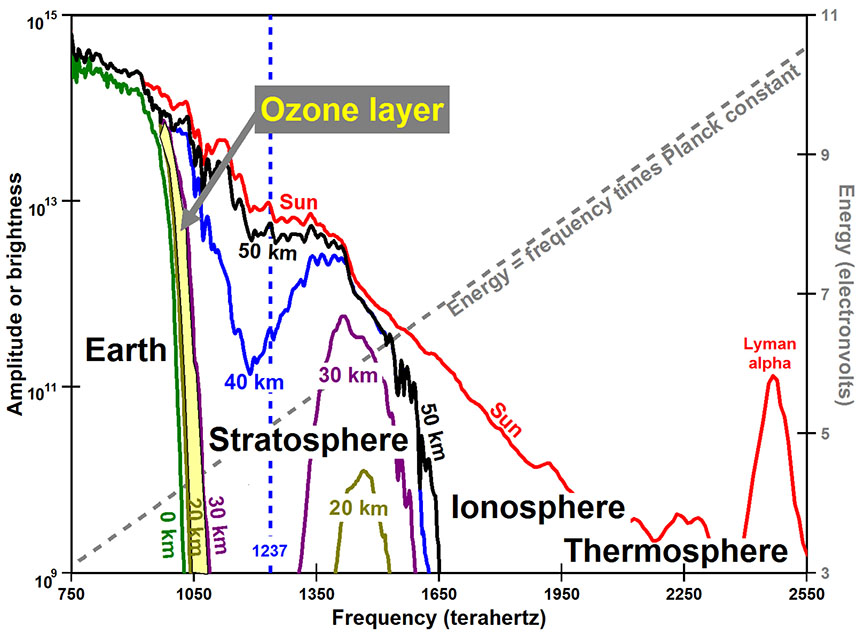Decrease in Ultraviolet Radiation with Altitude

The shortest wavelength, highest energy ultraviolet-C (UV-C) radiation from Sun is absorbed in the upper atmosphere. The ozone layer absorbs (blocks) most but not all UV-B. When the ozone layer is depleted, more UV-B and UV-A reaches reaches Earth’s surface. Below is a more quantitative version of this image.

Nearly all ultraviolet radiation from Sun (red line ) having frequencies higher than 1665 terahertz (THz, or wavelengths λ less than 180 nm) is absorbed above the stratosphere (black line at 50 km), and most radiation at frequencies above 1034 THz (or wavelengths below 290 nm) is absorbed above the troposphere. Global warming occurs when energy normally absorbed in the stratosphere reaches Earth’s surface. Based on DeMore et al. (1997) Page 260, Figure 7.
The small amount of highest energy solar radiation in the extreme ultraviolet (frequencies above 2418 THz, λ<124 nm, E>10.0 eV) is typically absorbed at altitudes above 85 km, causing photoionization primarily of N2, O2, and NO, and forming the ionosphere. The large Lyman-alpha spectral peak radiated at 2465 THz (121.6 nm) by hydrogen, which makes up 75% of Sun’s mass, normally dissociates O2, H2O, and NO at altitudes above 70 km, but during solar maximaums this peak can be 1.5 times larger than during solar minimaums (Woods et al., 2000) and may not all be absorbed until it penetrates down into the stratosphere. Note that essentially all of the solar energy for frequencies above 1665 THz (wavelengths <180 nm) has been absorbed above 50 km by a variety of photochemical processes that do not need to be detailed here.